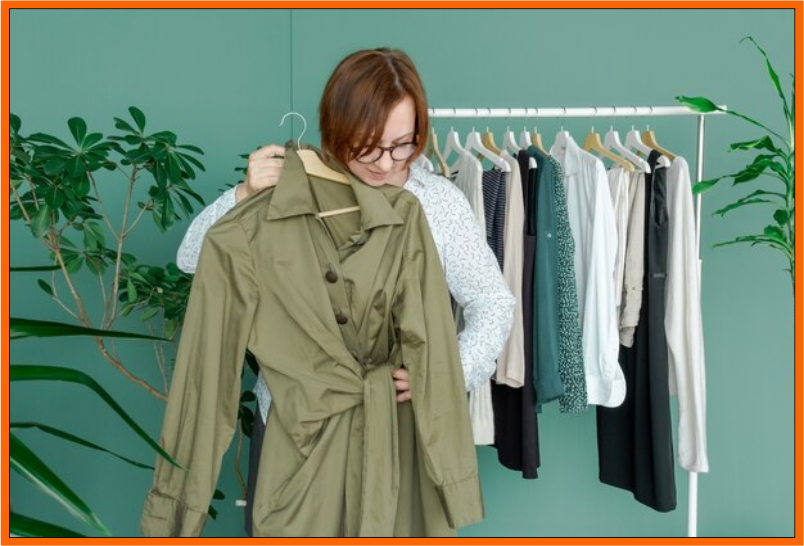Winter is a season of warmth, and your wardrobe should reflect not just the coziness of the season, but also a commitment to sustainability. In this comprehensive guide, we’ll delve into the world of sustainable winter wardrobes, exploring eco-friendly fashion choices that align with your values and make a positive impact on the planet.
Introduction
Sustainable fashion is more than just a trend; it’s a conscious choice to support ethical practices and reduce our environmental footprint. As we navigate the winter months, let’s explore how we can create a wardrobe that not only keeps us snug but also contributes to a healthier planet.
The Impact of Fast Fashion
The fashion industry’s rapid pace, known as fast fashion, has severe consequences for the environment and ethical concerns regarding labor practices. Understanding these impacts is crucial in making informed decisions about our winter wardrobes.
Environmental Consequences
Fast fashion contributes significantly to pollution, resource depletion, and landfill waste. The production of synthetic fabrics and the carbon footprint of transportation amplify the industry’s negative impact on the planet.
Ethical Concerns
Beyond the environmental toll, fast fashion often involves exploitative labor practices. Supporting sustainable choices means advocating for fair treatment and just wages for those involved in the production process.
Building a Sustainable Winter Wardrobe
Creating a sustainable winter wardrobe involves embracing key principles and making thoughtful choices.
Key Principles
- Prioritize quality over quantity.
- Opt for timeless styles that transcend seasonal trends.
- Embrace a mindset of mindful consumption.
Choosing Quality Over Quantity
Investing in high-quality, durable pieces may seem initially expensive, but the long-term benefits far outweigh the cost. These items last longer, reducing the frequency of replacements and lowering your overall environmental impact.
Embracing Timeless Styles
Instead of chasing fleeting trends, focus on timeless styles that withstand the test of time. A classic winter coat or versatile knitwear not only elevates your wardrobe but also minimizes the need for constant updates.
Eco-Friendly Fabrics
The fabrics we choose play a pivotal role in building a sustainable winter wardrobe. Opting for eco-friendly materials is a significant step in the right direction.
Organic Cotton
Organic cotton, free from harmful pesticides and chemicals, is a sustainable alternative to conventional cotton. Its production promotes soil health and reduces water consumption.
Hemp
Hemp is a versatile and eco-friendly fabric that requires minimal water and pesticides. It’s known for its durability, breathability, and biodegradability.
Tencel
Tencel, made from sustainably sourced wood pulp, boasts a soft feel and impressive moisture-wicking properties. Its production process is eco-friendly, making it a preferred choice for conscious consumers.
Wool Alternatives
While traditional wool may raise concerns, there are sustainable alternatives like recycled wool and cruelty-free options. These alternatives offer the warmth of wool without compromising ethical standards.
Thrifting and Second-hand Shopping
An excellent way to reduce the fashion industry’s environmental impact is by exploring thrift stores and second-hand markets.
Benefits of Thrifting
- Sustainable: Extending the lifespan of clothing reduces the demand for new production.
- Affordable: Thrifting offers budget-friendly options for quality items.
- Unique Finds: Discover one-of-a-kind pieces that showcase your individual style.
Finding Hidden Gems
Thrift shopping is a treasure hunt where hidden gems await. Uncover vintage coats, timeless accessories, and unique knits that contribute to a distinctive and sustainable winter wardrobe.
DIY Fashion: A Creative Approach
Adding a personal touch to your wardrobe not only fosters creativity but also reduces reliance on mass-produced items.
Upcycling Old Clothes
Transform old garments into new treasures through upcycling. Whether it’s adding embellishments, patchwork, or altering silhouettes, upcycling breathes new life into forgotten pieces.
Customizing Wardrobe Pieces
Personalize your winter wardrobe by customizing existing items. Adding embroidery, patches, or even dyeing fabrics can refresh your wardrobe without contributing to excess consumption.
Sustainable Accessories
Extend your commitment to sustainability beyond clothing by incorporating eco-friendly accessories.
Eco-Friendly Jewelry
Opt for jewelry made from recycled materials or ethically sourced gems. Sustainable jewelry brands prioritize responsible practices, ensuring your accessories align with your values.
Vegan Leather Goods
Explore the world of vegan leather, crafted from plant-based materials. From belts to boots, choosing cruelty-free alternatives contributes to a more sustainable fashion industry.
Capsule Wardrobe: A Minimalist Approach
A capsule wardrobe is a minimalist concept that involves curating a collection of essential, versatile pieces.
Basics of Capsule Wardrobe
- Versatility: Each item should complement multiple outfits.
- Quality over Quantity: Invest in durable basics.
- Seasonal Adaptability: Ensure your capsule wardrobe transitions seamlessly between seasons.
Benefits for the Environment
A capsule wardrobe reduces waste, as you make intentional choices and avoid the temptation of impulse purchases. This mindful approach aligns with the principles of sustainable fashion.
Ethical Brands Making a Difference
Supporting brands committed to sustainability is a powerful way to contribute to positive change.
Case Studies of Sustainable Fashion Brands
Explore the success stories of brands dedicated to ethical and sustainable practices. These trailblazers set an example for the industry, proving that fashion can be both stylish and conscientious.
The Role of Consumers
As consumers, our choices wield significant influence in shaping the fashion landscape. Educate yourself on sustainable practices and be mindful of the impact your decisions have on the industry.
Conscious Consumerism
- Research Brands: Choose those with transparent and ethical practices.
- Quality Over Quantity: Prioritize enduring quality over fleeting trends.
- Repair and Repurpose: Extend the life of your wardrobe through repairs and creative repurposing.
Reading and Understanding Labels
Familiarize yourself with eco-friendly certifications and labels. Recognizing trustworthy symbols ensures your purchases align with sustainable values.
Winter Fashion Trends Meets Sustainability
Staying on-trend while embracing sustainability is achievable with strategic choices.
Incorporating Trends Sustainably
- Statement Pieces: Invest in timeless statement pieces that transcend seasonal trends.
- Versatile Accessories: Elevate your look with accessories that complement various outfits.
- Mixing and Matching: Experiment with combinations to create new looks without additional purchases.
Maintaining and Extending Wardrobe Lifespan
Caring for your winter wardrobe ensures longevity and minimizes the need for frequent replacements.
Proper Care and Storage Tips
- Cleaning Guidelines: Follow care instructions to maintain fabric integrity.
- Seasonal Storage: Properly store seasonal items to prevent damage.
- Regular Maintenance: Check for wear and tear, addressing issues promptly.
Sustainable Winter Footwear
Winter footwear can be both stylish and sustainable with the right choices.
Vegan Boots
Explore the range of vegan boots made from synthetic materials that mimic the look and feel of leather without harming animals.
Eco-Friendly Materials
Choose boots made from eco-friendly materials like recycled polyester, organic cotton, or even plant-based alternatives. These options prioritize sustainability without compromising style.
The Economic Aspect of Sustainable Fashion
While sustainable fashion may seem initially pricey, it proves economical in the long run.
Long-term Cost Benefits
Investing in quality pieces reduces the frequency of replacements, saving money over time. Sustainable choices contribute to a more thoughtful and cost-effective wardrobe.
Social Impact: Empowering Communities
Sustainable fashion extends beyond environmental and personal benefits, positively impacting communities.
Fair Trade Practices
Support brands that prioritize fair trade practices. By doing so, you contribute to empowering workers and fostering positive change in the fashion industry.
Sustainable Fashion Events
Participating in or attending sustainable fashion events is a great way to stay informed and inspired.
Fashion Shows Promoting Eco-Friendly Choices
Discover upcoming designers and brands dedicated to sustainable practices through fashion shows. These events showcase the beauty and creativity of eco-friendly fashion.
Celebrity Influencers in Sustainable Fashion
Celebrities play a significant role in shaping fashion trends. Many influencers use their platform to advocate for sustainable choices.
Their Impact on Trends
Explore how celebrities influence sustainable fashion trends and use their influence to promote eco-friendly brands. Their choices inspire millions to make conscious fashion decisions.
Eco-Friendly Fashion for Kids
Instilling sustainable values in the younger generation starts with eco-friendly fashion choices for kids.
Teaching Sustainable Values
- Educational Clothing: Choose clothes with positive messages and graphics.
- Thrifting for Kids: Extend the practice of thrifting to your children’s wardrobe.
Balancing Style and Sustainability
Finding the perfect balance between personal style and sustainability is the key to a successful eco-friendly wardrobe.
Finding Personal Style Within Eco-Friendly Choices
Experiment with different styles and fabrics until you find what resonates with your personal aesthetic. Sustainable fashion is about expressing yourself while making responsible choices.
Sustainable Fashion Myths Debunked
Addressing common misconceptions is essential in promoting a more accurate understanding of sustainable fashion.
Addressing Common Misconceptions
- Sustainable Fashion is Expensive: Debunk the myth that sustainable fashion is unaffordable.
- Limited Style Choices: Showcase the diversity within sustainable fashion.
- Inferior Quality: Highlight the durability and quality of sustainable materials.
Environmental Certifications in Fashion
Recognizing trustworthy labels and certifications is crucial in making informed choices.
Recognizing Trustworthy Labels
- GOTS Certification: Guarantees organic and ethical standards.
- Fair Trade Certification: Ensures fair wages and ethical working conditions.
- Recycled Material Certification: Confirms the use of recycled fabrics.
Innovations in Sustainable Fashion
Technological advancements continue to drive innovation in the sustainable fashion landscape.
Technological Advancements
Explore how technology contributes to sustainable fashion, from 3D printing to innovative fabric development. These advancements shape a more sustainable future for the industry.
Future Trends in Eco-Friendly Fashion
Predicting the future of sustainable fashion involves exploring emerging concepts and evolving trends.
Predictions and Emerging Concepts
- Circular Fashion Economy: Emphasizes recycling and upcycling.
- Tech-Integrated Fashion: Integrating sustainable practices with technological innovations.
FAQs
How can I start building a sustainable winter wardrobe?
Creating a sustainable winter wardrobe starts with assessing your current items, identifying gaps, and gradually replacing non-sustainable pieces with eco-friendly alternatives.
Are sustainable fabrics more expensive?
While sustainable fabrics may have a higher upfront cost, their durability and longevity make them cost-effective in the long run. Investing in quality pays off over time.
What are some eco-friendly winter accessories?
Opt for accessories made from sustainable materials like recycled polyester, organic cotton, or vegan leather. Look for brands committed to ethical and eco-friendly practices.
How can I support sustainable fashion on a budget?
Explore thrift stores, participate in clothing swaps, and take advantage of sales from ethical brands. Making mindful choices within your budget contributes to a sustainable fashion lifestyle.
Can sustainable fashion be trendy?
Absolutely! Many sustainable brands prioritize both style and ethics, offering on-trend pieces that align with the latest fashion while maintaining eco-friendly practices.
Are there any online platforms for buying and selling second-hand fashion?
Yes, several platforms facilitate the buying and selling of second-hand fashion, including Depop, Poshmark, and ThredUp. Embracing these platforms promotes a circular fashion economy.
Conclusion
In conclusion, adopting a sustainable winter wardrobe is a powerful choice that transcends personal style. By making conscious decisions, supporting ethical brands, and embracing eco-friendly practices, each of us contributes to a brighter and more sustainable future.













